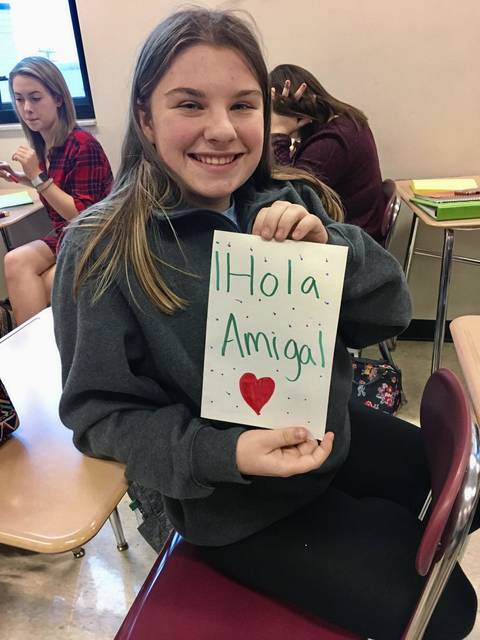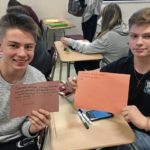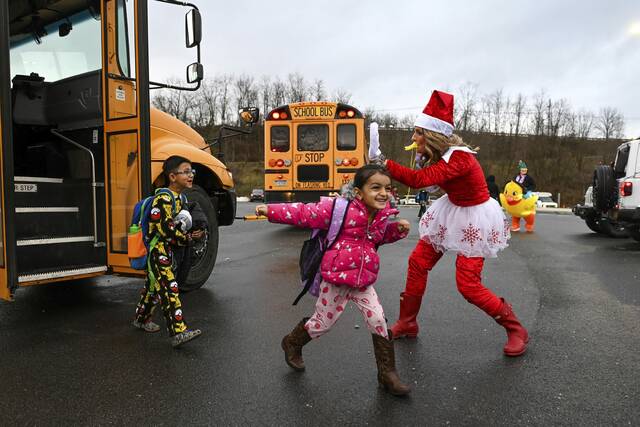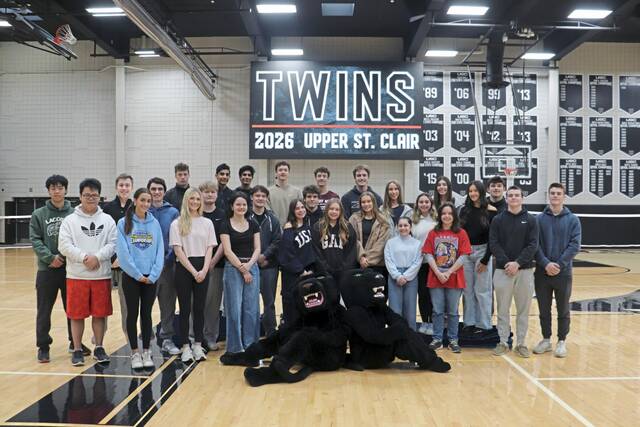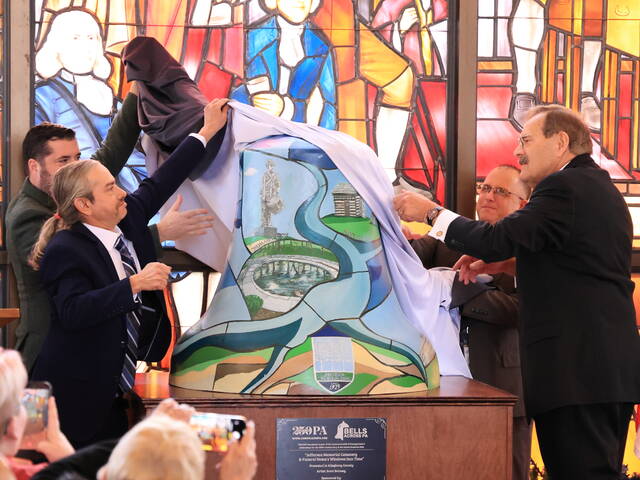Nikol Muslimovic hoped the bright, colorful cards she and her classmates at Baldwin High School created for women awaiting asylum at the Mexican border would give them hope and encouragement to keep going.
For her, this was personal. Just two decades ago, her parents immigrated to the United States from Bosnia. They knew no English and over the years have told her stories about the horrors of their childhood in their homeland before they decided to come to the U.S. in 2001.
“Whenever I heard about the women waiting in line for asylum in Mexico, it really hit hard,” said Nikol, 17, a senior at Baldwin. “Once you start thinking about it … they’re outside and they’re waiting to get a better life and it really hurts and you just really want to do anything that you can to help them.”
Students in Baldwin High School’s Spanish Club — which has about 75 members this year — do two service projects a year. They range from collecting or making items for Casa San Jose and Holy Family Institute, both Pittsburgh-area organizations that help the Latino community, to this year’s project where they made cards for The Worth Manifesto to be sent to women and children in Matamoras, Mexico, who are fleeing their homes due to violence, poverty and corruption in Central America.
The Worth Manifesto is running a campaign to aid homeless women and children living right outside the U.S. borders while they seek asylum.
For Spanish 3 and AP Spanish teacher Becca Michalski, who graduated from Baldwin High School in 2007, it’s important for students in the diverse district to learn about immigration.
In Baldwin-Whitehall, there is a large immigrant and refugee population, with students speaking 29 languages and coming from about 50 countries.
Michalski remembers back to her days as a student at Baldwin when teachers led English as a Second Language Cafes, where they paired students and new community members to get to know about each other.
Today, a large number of immigrants and refugees living in Baldwin-Whitehall come from Nepal. However, it’s changed over the years.
In her AP Spanish class of 11, four of the students were born in another country.
For Michalski, who lived in Costa Rica for three and a half years after graduating from college and later worked as a case manager at Holy Family Institute – which runs a program through the Office of Refugee Resettlement where unaccompanied children stay while seeking asylum – showing her students all sides of the immigration and the world is important.
In Spanish 3, and even more in-depth in AP Spanish, she teaches units on immigration.
That, she said, means leaving all political and personal feelings at the door and talking about facts in class.
“I just feel that it really is our responsibility to prepare them for something more than just college or whatever the next step is for them,” she said.
While Spanish grammar and vocabulary are important, she wants them to know everything about the people and the language.
“I want them in the future to be aware of these things and be able to hopefully be inspired themselves to at least at some point do something more to make a difference,” she said. “I think that’s a big part of our jobs.”
In AP Spanish, she took students on a field trip to the Pittsburgh Glass Center, where they saw a display about immigrants and refugees.
Anna Baloh, 17, talked about the tiny little shoes that children put over their feet to cover their tracks so they won’t be caught while trying to flee from danger in their homeland.
In class, students learned about Deferred Action for Childhood Arrivals (DACA) and the struggles that immigrants go through when coming to the U.S.
“We learned about true immigrant life and how they really are just trying to have a better life for themselves,” Nikol said.
As with any controversial topic, there often are debates when they discuss immigration in class.
Michalski just hopes that her students learn the facts, instead of just seeing snippets on the news, and make their own judgments from that.
Students at Baldwin said they feel lucky because their school is so diverse that they know more about the world.
“Baldwin is very inclusive to anybody that comes to America and anybody that comes to Baldwin,” Nikol said.
After learning about immigration in class, students at Baldwin wanted to do something to help.
Especially, it hit home, knowing that some of their classmates could have gone through similar struggles coming to the United States.
They made the cards inspiring and hopeful.
“I wanted them just to know that there are people that want you here,” Anna said.
“I didn’t want them to feel discouraged or not welcomed to come to this country, because this country is full of immigrants,” Nikol said. “It’s a land based on immigrants, and I feel like us sending those cards really made them be like, ‘I can enter this country. I can do this!’”


